We’ve all heard of 4G and 5G in cellular network technology. But you may have seen the term “4G LTE” and wondered, what does LTE stand for? The short answer is that LTE stands for “Long Term Evolution” and it is most commonly used in connection with 4G, the fourth-generation global wireless communication standard that was first defined in 2008.
As 5G is rolling out around the world, there are many questions about network technology and terminology. For example, is 4G going away? Is 4G LTE going away? And if so, when?
In this blog, we’ll briefly review the background of LTE. We will look at its role in cellular communications, its relationship to 5G — the next generation of cellular network technology — and how long 4G LTE and 5G will co-exist.
What Is LTE Long-Term Evolution
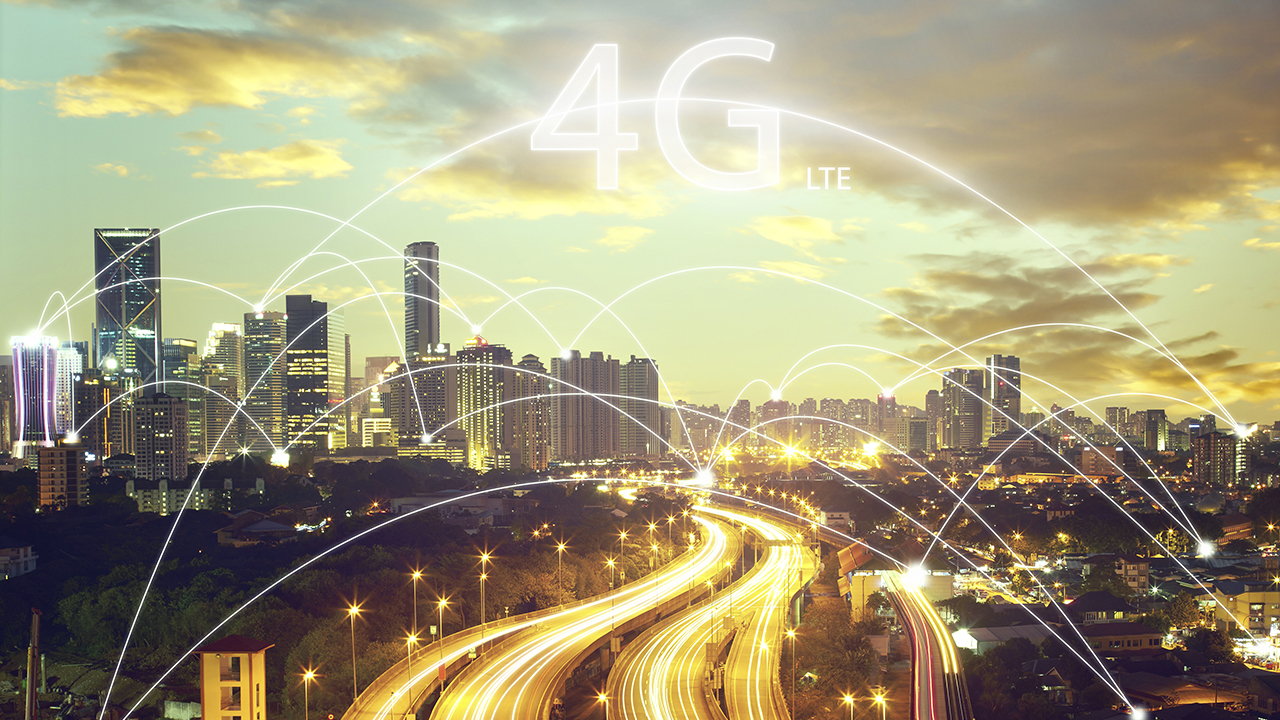
The concept of LTE inspires a number of questions. What Is LTE? What is LTE data? And, is LTE the same as 4G? In brief, while LTE is not technically the same as 4G, its evolution has occurred on 4G networks. LTE data is transferred faster and with lower latency, as we will explore in this section and the next.
For most consumers, their first introduction to “LTE” was likely when they noticed those letters in the corner of the screen on their smartphone and asked, what does LTE mean on my phone? For mobile handsets, it simply means that the phone is connected to the carrier’s 4G LTE network.
 At Digi, we are focused on the commercial and industrial use cases of 4G LTE and 5G, as our customers are distributed across the enterprise, industrial, transportation, government and medical landscapes. So the remainder of this article is devoted to the discussion of the LTE meaning and outlook in that context.
At Digi, we are focused on the commercial and industrial use cases of 4G LTE and 5G, as our customers are distributed across the enterprise, industrial, transportation, government and medical landscapes. So the remainder of this article is devoted to the discussion of the LTE meaning and outlook in that context.
When Long-Term Evolution (LTE) was first introduced in 2008, it defined a new cellular access network with high spectral efficiency, high peak data rates, short round trip time as well as flexibility in frequency and bandwidth. It signifies an evolving level of performance as the capabilities of cellular hardware, software and network technology — such as speed, latency, battery usage and cost efficiency — are optimized and improved over time. As one industry observer noted about LTE, “It isn’t as much a technology as it is the path followed to achieve 4G speeds.”
It is important to know that as succeeding generations of cellular technology are introduced, previous generation(s) will remain in service, often coexisting for a decade or more with the newer technology.
What LTE means for those purchasing and deploying LTE technology today is that they can deploy a wide range of devices in an LTE network with confidence that their deployment will remain viable for many years to come. This is especially important as older 2G and 3G networks are sunsetting to allow that spectrum to be used more efficiently. Looking at LTE vs. 3G, those with device deployments based on pre-4G networks must migrate to 4G or 5G without delay. If you already have 4G, you’re future-proofed through the useful lifespan of your products.
LTE technology has delivered multiple benefits worldwide:
- LTE connectivity is almost universally available around the world for both consumer and commercial/industrial applications.
- LTE provides long-term network continuity as older networks such as 2G and 3G sunset.
- In regions where 5G will not be available for some time, 4G LTE, 4G LTE Advanced, and 4G LTE Advanced Pro technology will support migration needs from 2G/3G for years to come.
- LTE offers higher speeds as well as significant benefits for low power applications and simpler, low-cost devices — providing a single technology foundation for a wide variety of use cases.
How Does LTE Work?

LTE improves upon the functionality and performance of older networks. This brief LTE description from Keven Sookecheff provides an excellent LTE overview to help understand how LTE works:
LTE is a redesign of the 3G standard to satisfy the demand for low latency data transmission. The redesign includes:
- An IP address based core network
- A simplified network architecture
- A new radio interface
- A new modulation method
- Multiple input, multiple output radios (MIMO) for all devices
Here are a few important facts to know about how LTE works at a high level:
- LTE offers lower latency and increased throughput throughout the network, dramatically improving upon 3G network performance.
- LTE operates on a separate spectrum from 3G networks and requires new hardware.
- LTE provides fast data download speeds of several 100th megabits per second (Mbps), compared to several 10th Mbps for 3G, meaning that LTE is 5-10 times faster than 3G.
- LTE can support data, voice (VoLTE), instant messaging and video on smartphones and tablets over a single interface. With 3G, this was done over different systems, and on some networks voice and data was mutually exclusive.
When 4G evolved from its 3G predecessor, the actual network architecture involved small incremental changes. The following diagram, from our 5G Network Architecture blog shows how LTE works from an architecture perspective:
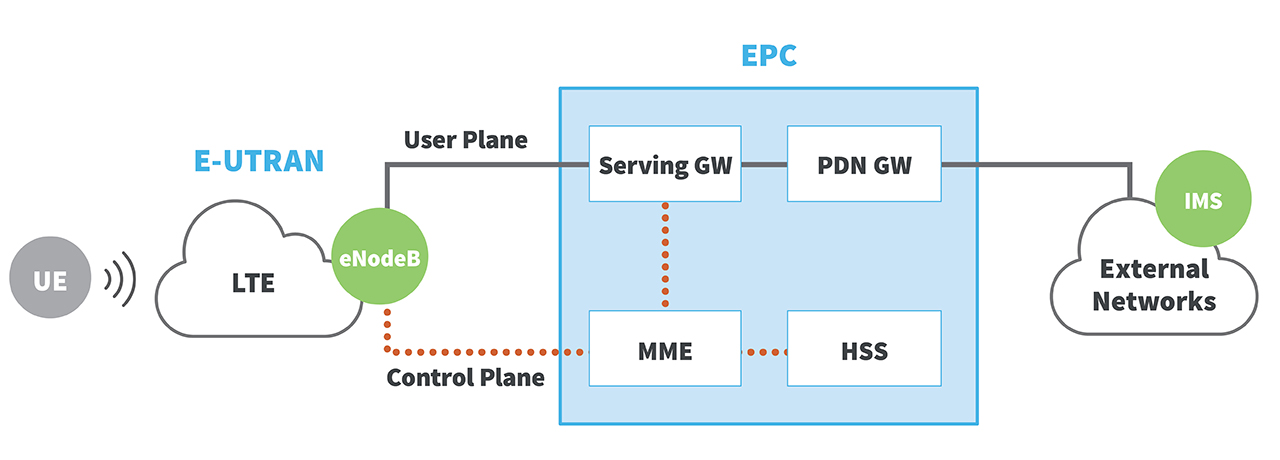
Source: 3GPP
In the 4G LTE, User Equipment (UE) like smartphones or cellular devices, connects over the LTE Radio Access Network (E-UTRAN) to the Evolved Packet Core (EPC) and then further to External Networks, like the Internet. The Evolved NodeB (eNodeB) separates the user data traffic (user plane) from the network’s management data traffic (control plane) and feeds both separately into the EPC.
The Evolution of LTE Technology
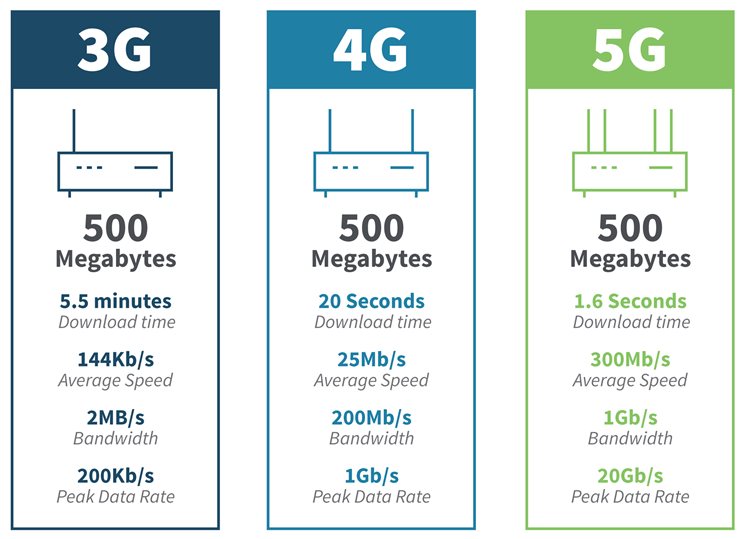
Approximately every decade the Radiocommunication Sector of the International Telecommunications Union (ITU-R) and its partners define a new generation of requirements for speed, connectivity and spectrum for the worldwide mobile communication systems. Older generations of technology are retired or sunsetted periodically so that more data can be carried over the same spectrum and more devices can share the available spectrum.
The ITU-R standards reflect advances in technology and timelines for their adoption are established to meet new application and industry needs. Another organization called the 3rd Generation Partnership Project (3GPP) takes the ITU-R requirements and writes technical specifications that are bundled into a series of releases.
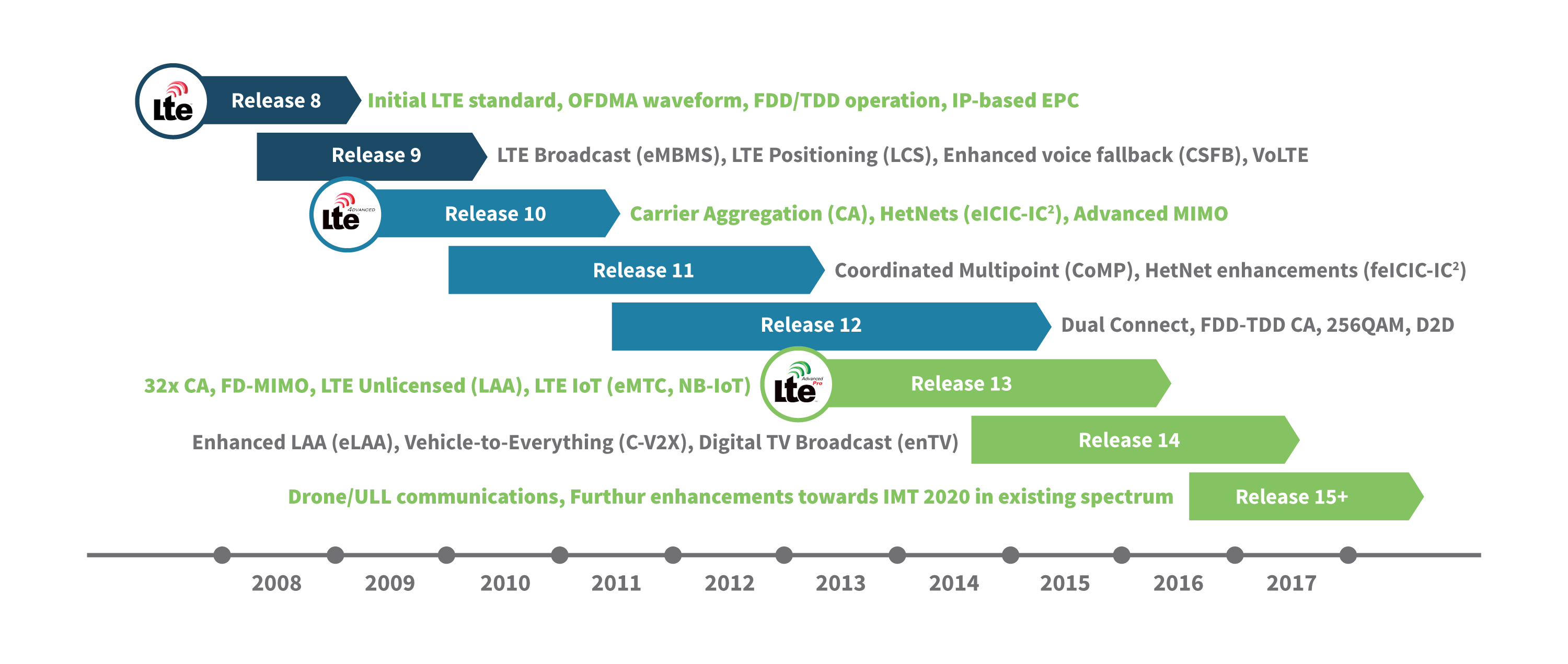
Timeline of releases by 3GPP shows key milestones in the evolution of LTE technology. Source: Qualcomm
Here is a brief chronology of key LTE development milestones and related LTE technology:
- 3G was introduced in 1998 and could be considered the technological baseline for LTE, as LTE specifically refers to performance capabilities that exceed 3G. 3G was the first technology with data speeds in the Mbps range.
- 4G speed and connection standards were set by the ITU-R in March 2008. The 4G standard for mobile, including smartphones and tablets, specified that any product or service calling itself 4G needed to have connection speeds with a peak of at least 100 Mbps, and at least 1 Gigabit per second (Gbps) for stationary uses. However, when the standards were first set, those speeds were not yet possible. In response, the ITU-R allowed products and technology to be labeled “4G LTE” if they provided a substantial improvement over 3G technology.
- LTE Advanced (LTE-A) is an enhanced version of LTE that offers faster speeds and greater stability than normal LTE, but is still not as fast as “true” 4G. It was standardized in 2011. LTE-A achieves higher speeds by aggregating channels, so users can download data from multiple sources at the same time.
- LTE Advanced Pro (LTE-AP) specifications were released in 2016 and 2017. LTE Advanced Pro includes three major technical innovations: 1) carrier aggregation, which uses spectrum from different LTE carrier bands, 2) Higher-order modulation, which uses available spectrum more efficiently by carrying more data bits, and 3) multiple input-multiple output (MIMO) antennas, which transmit and receive data in parallel at higher speeds. MIMO technology improves network coverage and throughput, particularly in urban areas. Gigabit-class LTE, a form of LTE Advanced Pro, is theoretically capable of download speeds exceeding 1 Gbps, although most users will not experience speeds that fast. Gigabit-class LTE is an attractive choice for applications in retail, transportation and other industries that need high-speed, high-bandwidth solutions.
- 5G is the newest standard, released in 2019 and 2020. 5G is now rolling out around the world. When fully implemented, 5G networks will offer speeds of up to 10 Gbps, plus lower latency, lower power requirements and virtually unlimited data capacity.
What Is Private LTE?

It's important here to also mention “Private LTE” or “Private Mobile Networks”, which offer a deployment option for LTE technology. While LTE is primarily used in public networks, Private LTE networks are small wireless networks that operate using the same protocols and technology as public LTE, using licensed, unlicensed or shared spectrum to deliver coverage for cellphones and other devices. Mobile network operators (MNOs) can license spectrum and then deploy an isolated Private LTE network on that spectrum.
Private LTE networks are an affordable solution for geographically defined sites such as remote oil fields or mining sites, or in confined areas such as in large factories or seaports. Private LTE is also seen in airports, sports stadiums and on college or corporate campuses. These various use cases benefit from the near-constant uptime that is possible with Private LTE.
Citizens Broadband Radio Service (CBRS) is a version of Private LTE in the U.S. that uses shared spectrum in the 3.5 GHz band (B48). CBRS, which addresses similar use cases than Wi-Fi, is becoming increasingly popular with Enterprise and Industrial customers that want more control over their wireless network. It offers a cost-effective networking option for remote worksites and rural areas with poor or no public cellular reception.
What Is the Difference Between 3G and LTE?
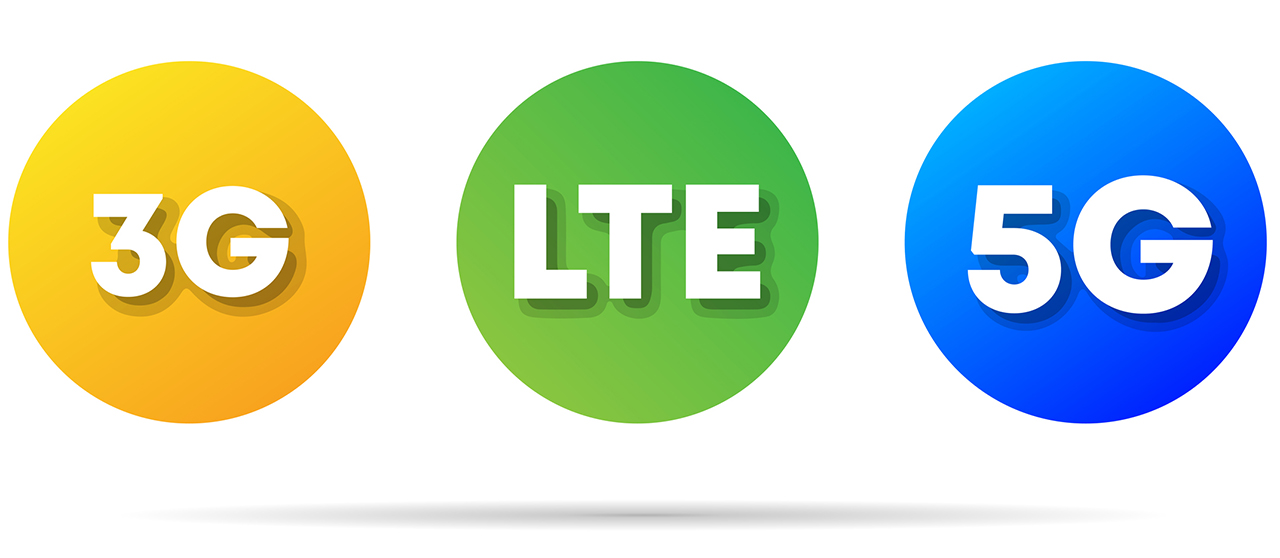
3G networks began rolling out commercially in 2002, gradually augmenting and later replacing the earlier 2G network protocol. LTE functionality builds on some of the underlying 3G technology and functions as an enhancement to 3G.
Here are some of the major differences between 3G and LTE:
- Speed: 3G is slower, with data rates measured in kilobits per second (Kbps) rather than megabits per second.
- Latency: 3G latency (the time gap between when data is sent and when it is received) is much greater.
- Power usage: LTE devices transfer a higher volume of data and can therefore use batteries faster than 3G, which has cost and power management implications that developers and network managers must take into consideration.
- Availability and reliability: 3G networks until recently were more widely available. Today, 4G networks are nearly universally available and the reliability differences have largely disappeared.
Learn more in these related articles:
What Is the Difference Between 4G and LTE?

The terms “4G” and “LTE” are often used interchangeably and “4G LTE” is seen frequently in industry literature. While carrier marketing sometimes suggests that 4G LTE is an enhanced version of 4G, 4G LTE actually refers to devices and networks that are evolving from the slower 3G standard to full 4G speed and throughput capability. 4G LTE covers the entire range of download speeds from 3G’s 10th of Mbps to 4G’s 100th of Mbps.
“4G” refers to the generation of technology, while “LTE” is the methodology for evolving that generation over the course of multiple releases from 3GPP that explicitly set out the technical steps that deliver better performance and more functionality. This incremental process keeps devices compatible and enables technology to carry forward in a smooth transition from one generation to the next.
Why LTE Networks Matter for IoT
LTE networks are used heavily by Internet of Things (IoT) solutions to connect machinery and equipment and enable them to send and receive data. While the IoT existed before the introduction of LTE-level connectivity, the higher speed and throughput of LTE made it possible for IoT systems to control larger and more complex systems with greater precision.
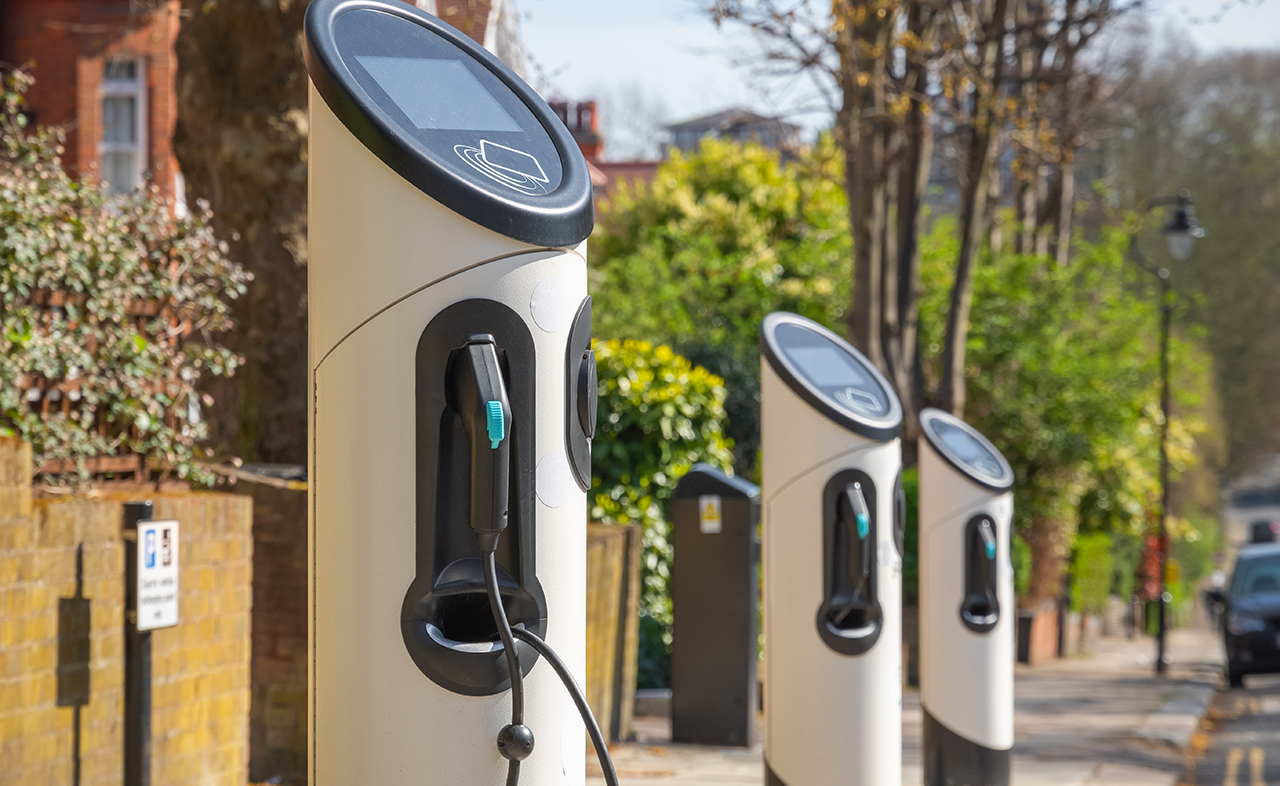
IoT solutions are used in virtually all industries. The following are some of the most widely deployed examples of LTE-enabled IoT:
- Transit: Buses, commuter rail and other forms of public transit depend on LTE data and connectivity to provide information to dispatchers and system administrators on vehicle performance, ridership levels and for passenger Wi-Fi.
- Smart Cities: Numerous IoT applications using LTE provide cost efficient functionality for municipalities, including intelligent lighting controllers for streets and public spaces, electric vehicle charging stations, and high-speed LTE networks to connect traffic signals for real-time adaptive traffic management
- Industrial applications: IoT plays a major role in factory and industrial operations, including process monitoring and control, manufacturing automation and predictive maintenance.
- Precision agriculture: Irrigation systems and other agricultural infrastructure facilitated by LTE can provide significant labor and cost savings for farmers.
- Water/wastewater management: IoT applications with LTE connectivity provide 24/7 wireless monitoring for wells, lift stations, sewers and other components of water and wastewater systems.
- Retail and digital signage: IoT solutions for retail applications and digital signage are used in variety of use cases, from informational signage and outdoor advertising to point-of-sale systems, ATMs, self-service checkout systems and more.
Learn more about IoT and LTE in these related articles:
Why Is LTE Essential for 5G?
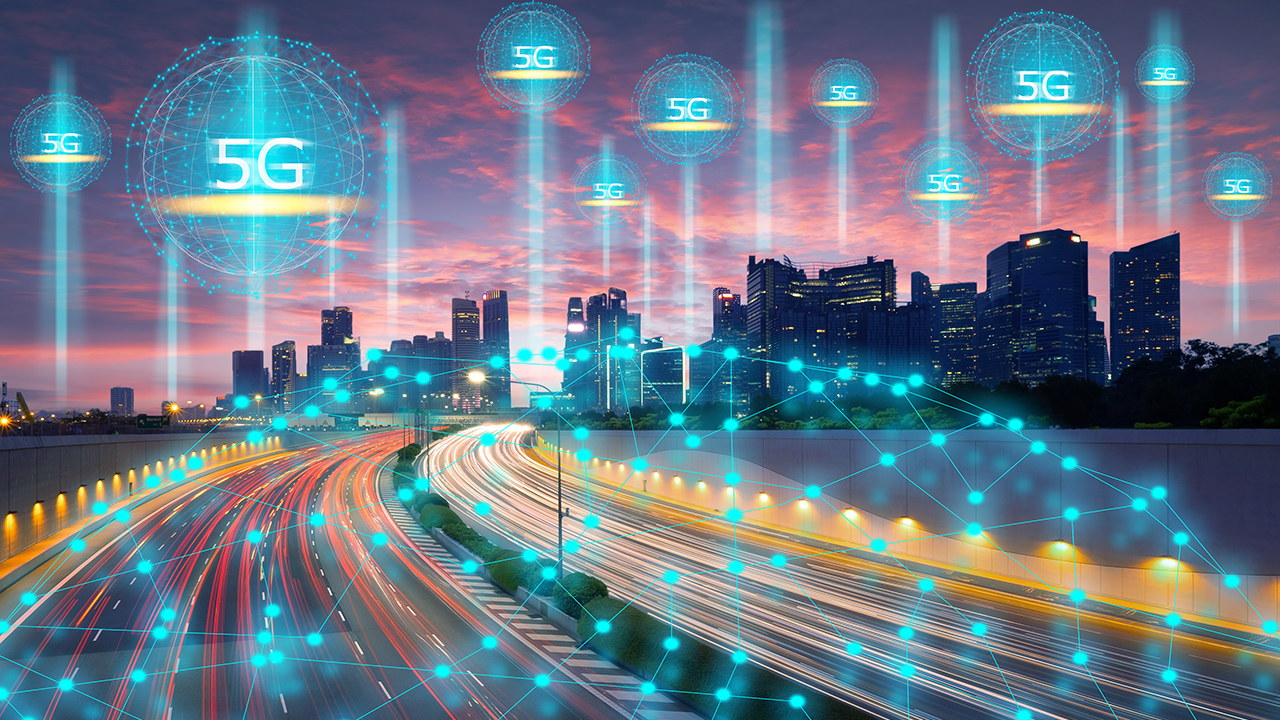
Continuing LTE connectivity is essential for the smooth rollout of 5G networks. LTE and 5G networks will co-exist for at least a decade until the full 5G infrastructure is built out and LTE will be critical to providing fallback connectivity in areas with limited 5G coverage. Early on, LTE will also be significantly cheaper than 5G for most applications.
From an infrastructure perspective, almost all 5G networks will be initially rolled out in “5G non-standalone” (5G NSA) mode. Initial 5G devices have a radio built in that supports both 4G LTE and 5G. The device will connect to the 4G LTE network first, and uses a 5G network for additional bandwidth, if one is available. Eventually, the roles will be reversed as 5G networks are maturing, and devices will only connect to the 5G network in “5G stand-alone” (5G SA) mode, and are then able to take full advantage of 5G technology.
Here are some FAQs about the important ways that LTE will support 5G:
- When will 5G phase out 4G LTE? 5G requires new hardware for both network operators and their customers. Network operators must install new hardware in all of their transmission towers, which will be a lengthy, labor-intensive process. However, the good news is that network operators started deploying new 5G infrastructure several years ago, when 5G was still in its final definition. Through a simple software update, the infrastructure is now able to support 5G and 4G LTE simultaneously.
- What is LTE service? LTE service provides LTE service to 4G LTE end devices, such as routers, gateways, phones and tablets.
- Are LTE and 5G on separate bands? Not necessarily. 5G can share the same spectrum with 4G LTE using an approach called Dynamic Spectrum Sharing (DSS). DSS allows us to use 5G sooner and extends the life of 4G LTE networks and thus the service life of 4G LTE devices. However, 5G is also using “fresh” spectrum such as 5G mmWave that is exclusive to 5G.
Additionally, LTE provides essential physical network infrastructure for 5G. One industry expert noted that “Early 5G networks … require a 4G LTE control plane [a network element responsible for routing traffic] to manage 5G data sessions.”
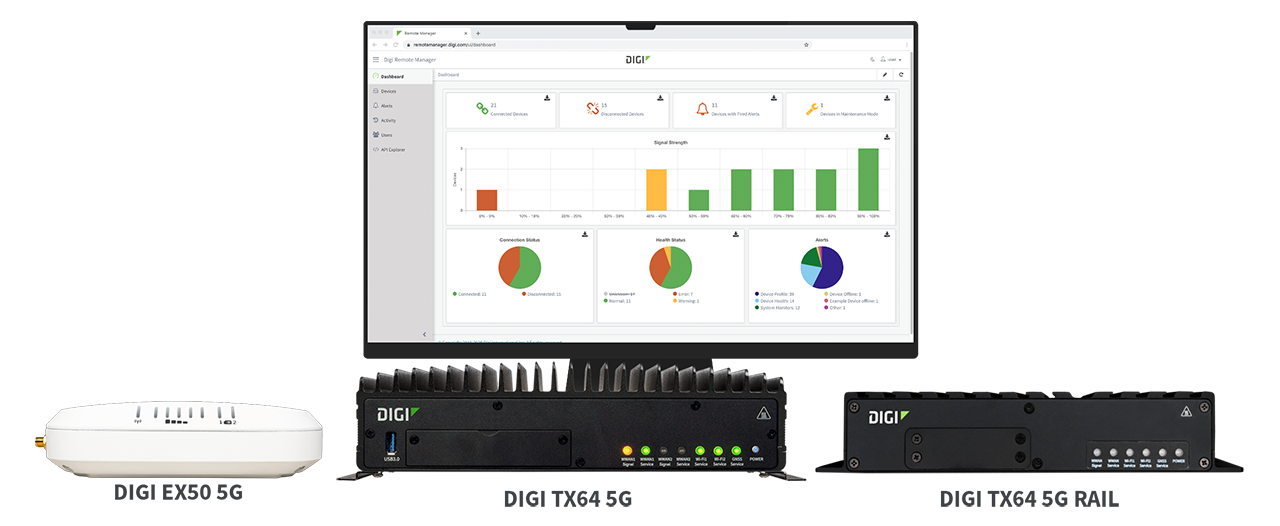
Digi LTE and 5G Solutions to Future-Proof Your IoT Deployments
LTE is a key stepping-stone in the development of wireless connectivity, for consumers as well as for commercial and industrial applications. Even as industries and IoT developers discover the extraordinary possibilities presented by 5G, it’s reassuring to know that LTE technology provides a proven — and often lower cost — bridge to that future.
Digi offers complete cellular solutions using 4G LTE, LTE Advanced and 5G technologies to support your organization in future proofing your deployment of connected devices, with robust, integrated security, sophisticated software, and industry-leading cloud and edge management tools.
Need support for your migration to new technology? Learn about LTE and 5G Migration Solutions. Digi can support any aspect of your project as you prepare your organization for the sunset of 2G and 3G networks and for the world of LTE, 5G and beyond.
Get Our Solution Brief
Learn about next-generation 5G connectivity solutions
Download PDF
Next Steps